Stillbirths, neonatal deaths surge in Gaza amid colossal humanitarian crisis
By Maryam Qarehgozlou
“We are missing everything, we miss white bread,” said Mariam, a little girl in Gaza, breaking down in tears after a Palestinian journalist asked what she missed amid the devastating Israeli war on Gaza.
“Our houses were destroyed, our situation is difficult, we are [sheltering] in the school and we eat zaatar [a West Asian spice blend] on its own, without bread,” she stated in an emotional tone.
More than 170 days into the Israeli genocidal war on the besieged coastal Palestinian territory, killing at least 32,300 Palestinians, famine looms over much of the blockaded territory as the Zionist regime continues to block food and basic supplies from entering the Strip.
Verified videos show people rushing to delivery trucks or waiting in long queues for food, with some men busy gathering spilled flour off the ground in an act of utter desperation.
“What is the fate of the children suffering from hunger? Will they find someone to save them or will they die? My son Ali has already died,” said a Palestinian father who recently lost his son, born in wartime, due to malnutrition and dehydration at northern Gaza’s only pediatrics hospital.
“Ali’s life got worse day after day. We tried to get him treated at hospitals, but there was no help... Ali died in front of the entire world, which kept watching him pass away.”
Ali was just one of at least 23 children who died of malnutrition in Gaza, according to figures shared by the UN’s agency for children (UNICEF) last week. The figure has gone further up since then.
Israel has killed more than 14,200 children in Gaza in the past 170 days, according to a statement released by the Gaza media office on Sunday, with thousands more feared dead under the rubble.
Many others are acutely malnourished and “don’t even have the energy to cry,” according to UNICEF Executive Director Catherine Russell.
“We haven’t seen that rate of death among children in almost any other conflict in the world, it’s really shocking. Thousands more have been injured or we can’t even determine where they are,” Russell was quoted as saying by the CBS News network last week.
CARE Palestine, a leading humanitarian organization fighting poverty that has been working in the occupied West Bank and Gaza since 1948, also said recently that the number of children killed in Gaza is higher than the number of children killed in four years of wars around the world combined.
‘A nightmare’
Last Friday, UNICEF warned in a report that the number of children under the age of two suffering from acute malnutrition is increasing at an “alarming rate” in the northern Gaza Strip amid a chokehold on aid entering the strip.
“One in three children is now malnourished, compared to 15.6 percent in January 2024,” the report said.
According to the report, screenings conducted for the first time in Khan Younis revealed that 28 percent of children under the age of two were acutely malnourished and more than 10 percent severely wasted.
Dominic Allen, UN Population Fund (UNFPA) representative for Palestine, said in a video news conference from occupied al-Quds that there are no more “normal-sized babies” in Gaza.
“What they do see though, tragically, is more stillborn births... and more neonatal deaths, caused in part by malnutrition, dehydration and complications,” Allen said after visiting hospitals still providing maternity services in the north of Gaza, where the need is especially great.
According to Allen, the humanitarian situation in Gaza is a “nightmare” for mothers and babies.
“Those mothers should be wrapping their arms around their children,” he said. “Those children should not be wrapped in a body bag.”
‘Deliberate’ blocking of aid
Israel’s genocidal onslaught on Gaza and indiscriminate attacks on civilian and humanitarian assets have rendered the territory “practically uninhabitable,” according to the UN, creating an environment of mass displacement and deprivation, where the Zionist regime is using starvation as a weapon of war.
The blockade of much-needed aid, particularly food, into the besieged territory, has created a “man-made famine” that is forcing Palestinians to resort to feeding their children grass and tree leaves to stave off hunger, according to aid agencies and eyewitness accounts.
Israel has refused to allow enough trucks into Gaza during this period, creating the conditions for famine – which humanitarian workers say amounts to deliberate starvation of people in Gaza.
In a new report released last week, Oxfam said that Israeli authorities are rejecting the aid stockpiled just kilometers from the border of 2.3 million Palestinians in Gaza “for no clear reasons.”
“The aid originates from many humanitarian organizations around the world and has been rejected over weeks and months as a result of an unpredictable and chaotic regime of approval, scanning and inspection, ultimately controlled by Israeli authorities. The reasons for rejection are not clear,” it said.
Oxfam’s report “Inflicting Unprecedented Suffering and Destruction,” highlighted that Israel is “actively” preventing the delivery of international aid into Gaza and punishing all Palestinians living in Gaza by “deliberately” depriving them of life and safety.
Israel’s intentional actions in depriving Gazans of aid breaks one of the key provisions demanded by the International Court of Justice (ICJ) in its ruling in January.
“The ICJ order should have shocked Israeli leaders to change course, but since then conditions in Gaza have actually worsened,” said Oxfam Middle East and North Africa Director, Sally Abi Khalil.
The fact that the international community does not challenge Israel hard enough and instead resorts to less effective methods like airdrops and maritime corridors is a huge red flag, Abi Khalil added.
Airdrops, sea shipments not effective
Due to Israel’s restrictions on aid delivery by land, some countries have recently ramped up airdrops of aid into Gaza. However, it has been described as “a theatrical move” to hoodwink the world.
A group of 25 human rights and humanitarian organizations last week called on governments to prioritize ceasefire and ground-based humanitarian aid instead of airdrops.
“Airdrops are unable to provide the volumes of assistance that can be transported by land. While a convoy of five trucks has the capacity to carry about 100 tons of lifesaving assistance, recent airdrops delivered only a few tons of aid each,” they said.
Airdrops, carried out by countries that also provide weapons to Israel such as the US, UK and France, can also be extremely dangerous to the lives of civilians seeking aid.
Earlier this month, at least five people were killed and 10 others injured when airdropped aid packages fell on them in the Al Shati camp west of Gaza City.
“When you’re dropping aid from great heights, it’s hard to control where it goes or who gets it. In Gaza some of the aid has fallen into the sea and some into extremely dangerous areas with heavy fighting,” said Alun McDonald, Islamic Relief’s head of media and external relations.
According to McDonald, bringing aid via a maritime corridor from Cyprus to hundreds of thousands of Palestinians who are on the brink of starvation will also “have very limited impact” without a ceasefire and an end to the blockade.
He said while aid agencies are “racing against time” to save lives sea shipments, much like airdrops do not come close to supplying as much as trucks.
“So far one ship with 200 tons of aid has set off – that’s reportedly equivalent to about 15 trucks when we need at least 800 trucks a day. The amount of aid likely to come by sea is literally a drop in the ocean compared to what’s needed,” he added.
Gaza is now “the most dangerous place in the world” according to aid agencies, with hundreds of humanitarian workers and health staff killed and aid convoys attacked since October 7.
In the past couple of weeks alone, hundreds of desperate civilians have been killed while lining up to get food aid for their starving children.
On 29 February, Israeli troops fired on crowds of Palestinians gathered to collect flour in the southwest of Gaza City, killing at least 112 people and injuring some 760.
It was followed by Israeli soldiers again massacring Palestinian civilians who were waiting for aid supplies near the Kuwait roundabout on the outskirts of Gaza City, leaving more than 80 dead and 200 injured, according to Euro-med monitor.
‘Mass death’
Aid agencies warn that people living in Gaza will suffer “mass death” from disease and starvation far beyond the current 32,300 war casualties unless Israel takes immediate steps to end its “war crimes.”
According to the findings of a collaborative project between the London School of Hygiene and Tropical Medicine and the Johns Hopkins Center for Humanitarian Health at Johns Hopkins University, up to 74,290 excess deaths could occur in Gaza as a result of a potential escalation of the war.
The projections, covering six months from February 7 to August 6, 2024, look into the possibility of three scenarios: an immediate permanent ceasefire; status quo (a continuation of conditions experienced from October 2023 till mid-January); and a further escalation of the war
“Over the next six months we project that, in the absence of epidemics, 6,550 excess deaths would occur under the ceasefire scenario, climbing to 58,260 under the status quo scenario and 74,290 under the escalation scenario. Over the same period and with the occurrence of epidemics, our projections rise to 11,580, 66,720, and 85,750, respectively,” it warned.
The projected excess deaths, driven largely by infectious diseases and traumatic injuries, underline a dire need for immediate intervention in sanitation, nutrition, and healthcare services in Gaza, it added.
According to the World Health Organization (WHO), infants and young children are among the least able to cope with chronic hunger caused by more than five months of intense Israeli bombardment and siege.
‘On brink of death’: WHO raises alarm on Gaza children's dire hunger crisis#GazaGenocide https://t.co/F6f4YNZ8C5
— Press TV 🔻 (@PressTV) March 20, 2024
An analysis by Juzoor for Health and Social Development, one of Oxfam’s partner organizations in Gaza, revealed that children under one are being hit the hardest in Gaza and almost every second baby (45 percent) is malnourished.
Dr. Umaiyeh Khammash, Director of Juzoor, warned that infectious diseases, lack of food and clean water, and the ongoing bombardment are a “lethal cocktail” for children’s health.
“Our staff on the ground is doing a heroic job, but if things don’t change quickly, we will see a catastrophic level of death from starvation,” added.
‘Slow death of children’
Adele Khodr, UNICEF regional director for West Asia and North Africa, warned recently that more children in Gaza will die as Israel continues to impede aid operations, citing the Integrated Food Security Phase Classification (IPC) recent report about an “imminent famine” in Gaza.
“The IPC findings on Gaza confirm what we have been warning about of impending famine for months now. The world’s inaction is shocking as more children succumb to a slow death. All border crossings must open now to allow unfettered access to humanitarian aid,” she wrote in a post on X, formerly Twitter.
Hiba Tibi, Country Director for CARE in West Bank and Gaza, said doctors tell them they are losing children every day.
“Starvation is cruel. It is a slow and painful death. Hearing mothers tell us how their child’s life is vanishing before their eyes, are the most heartbreaking stories we will ever hear. We also know that those who survive starvation will suffer cognitively and physically for the years to come. Children’s bodies, hearts, and minds will be impacted for their entire future,” she said.
VIDEO | German government refuses to condemn US aggression against Venezuela
Venezuela’s acting president calls for peaceful coexistence, dialogue with US
Denmark, Greenland leaders urge Trump to halt takeover threats
Iran pioneers future of wound care with West Asia’s first smart nanocellulose dressing
Enduring bond: How Gen. Soleimani’s loyalty to Ayatollah Khamenei shaped his life and legacy
Israel commits 99 violations against Palestinian journalists in one month: Press union
Spain, five Latin American nations denounce US military aggression against Venezuela
European leaders – touchy about Ukraine – cheer US ‘regime change’ war on Venezuela


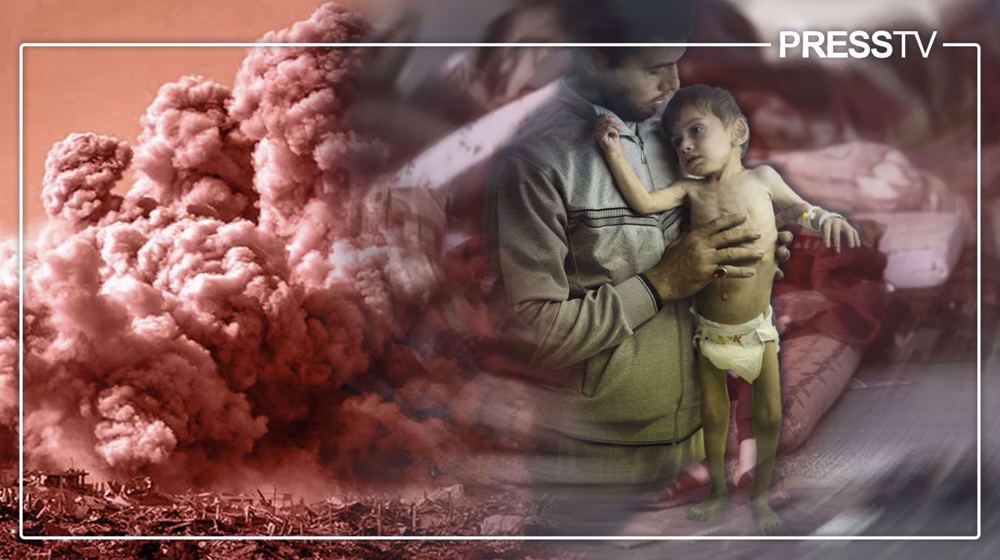
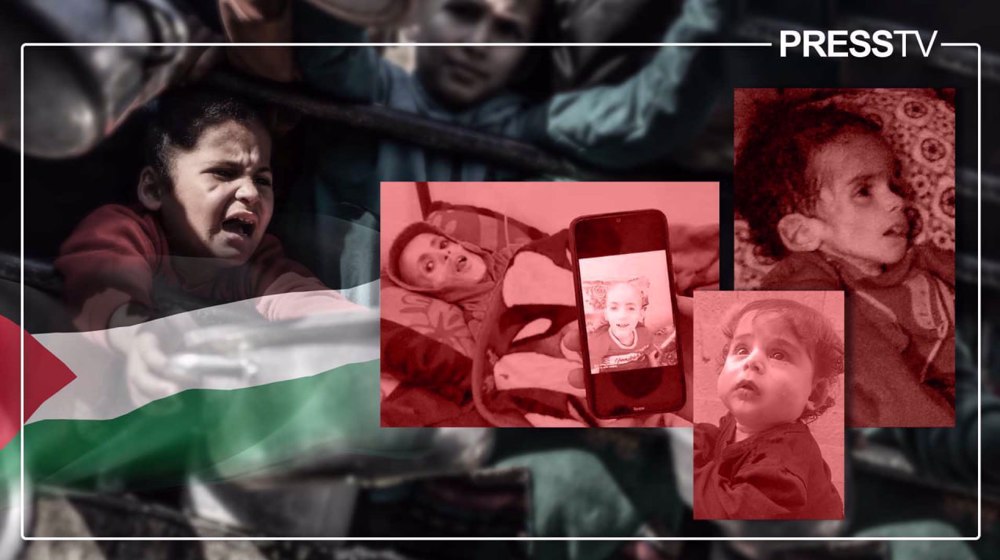
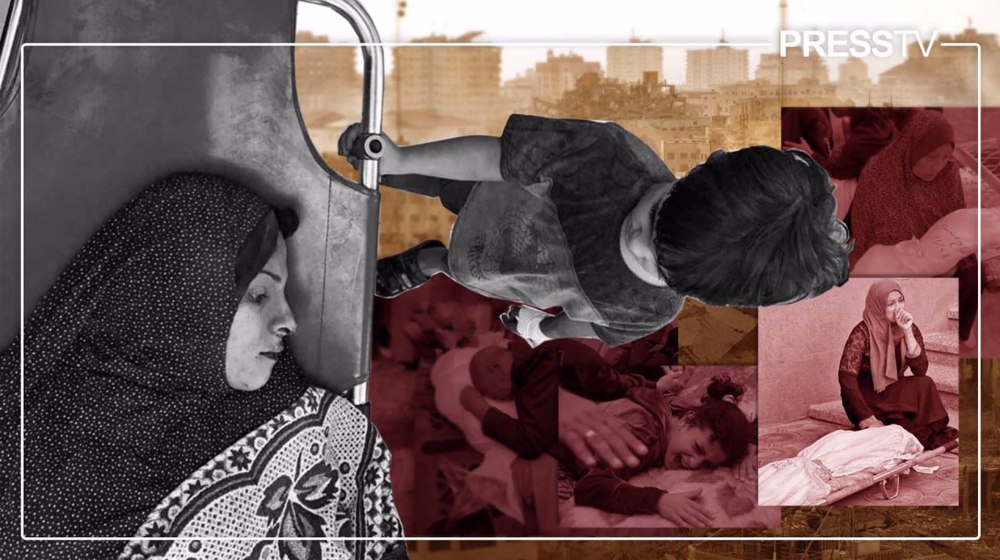
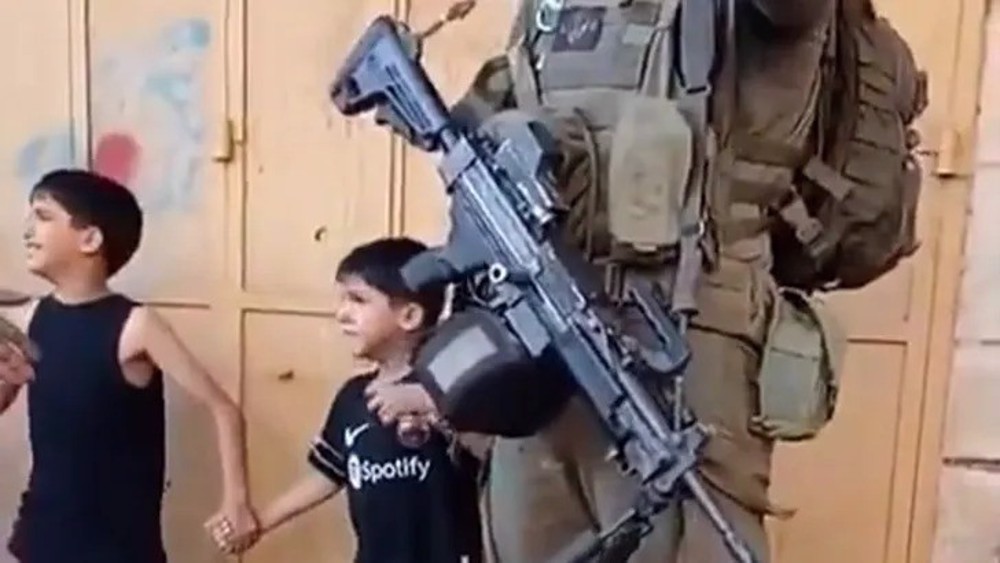
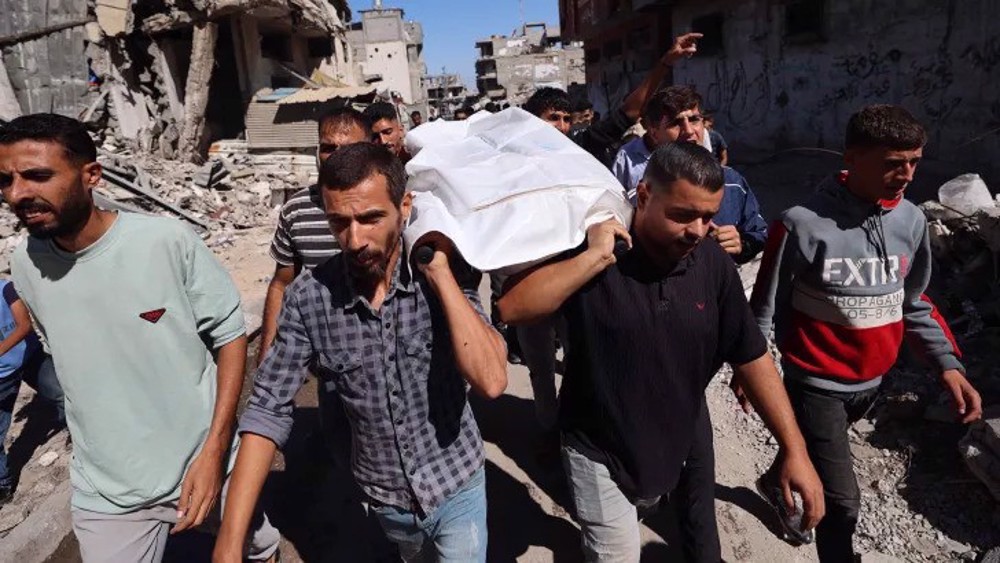
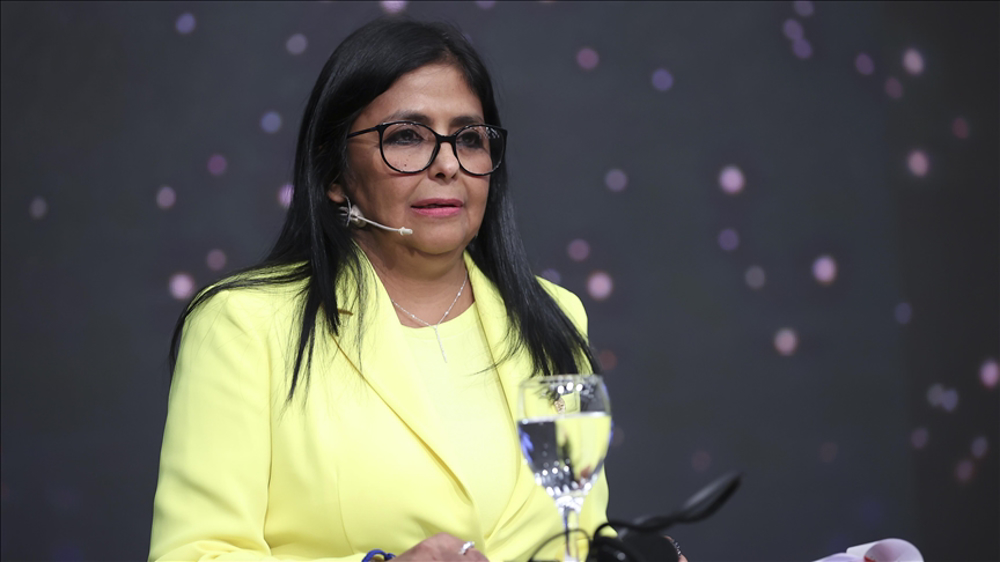



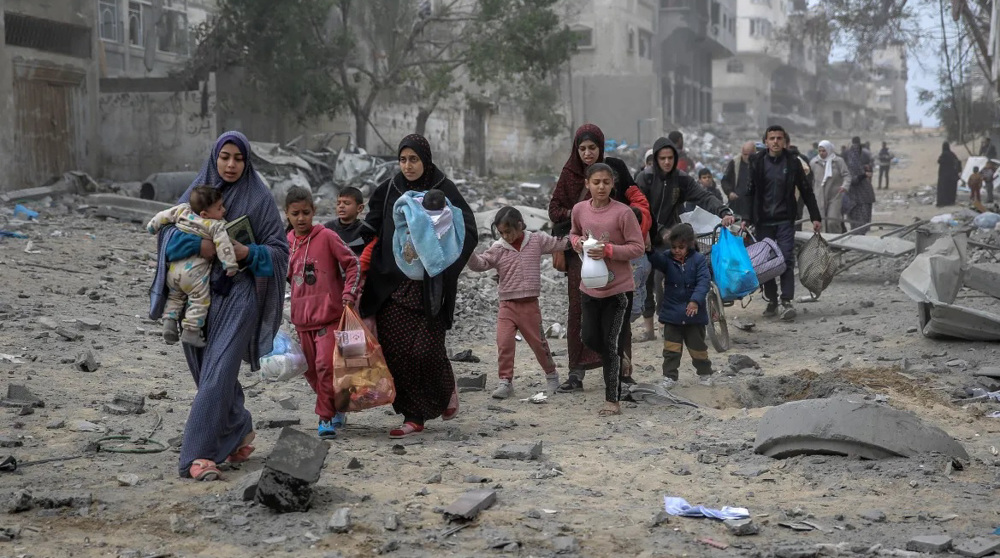
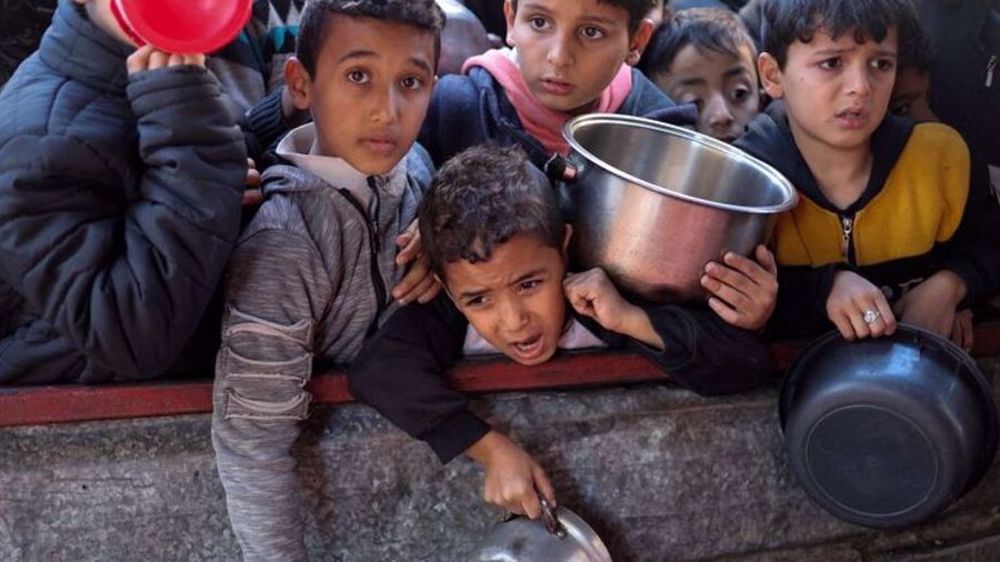
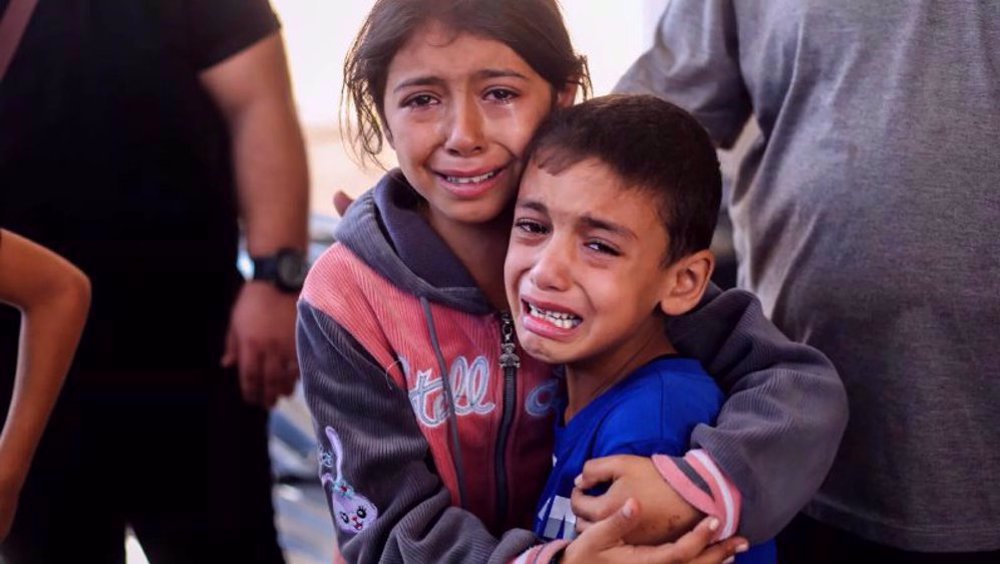
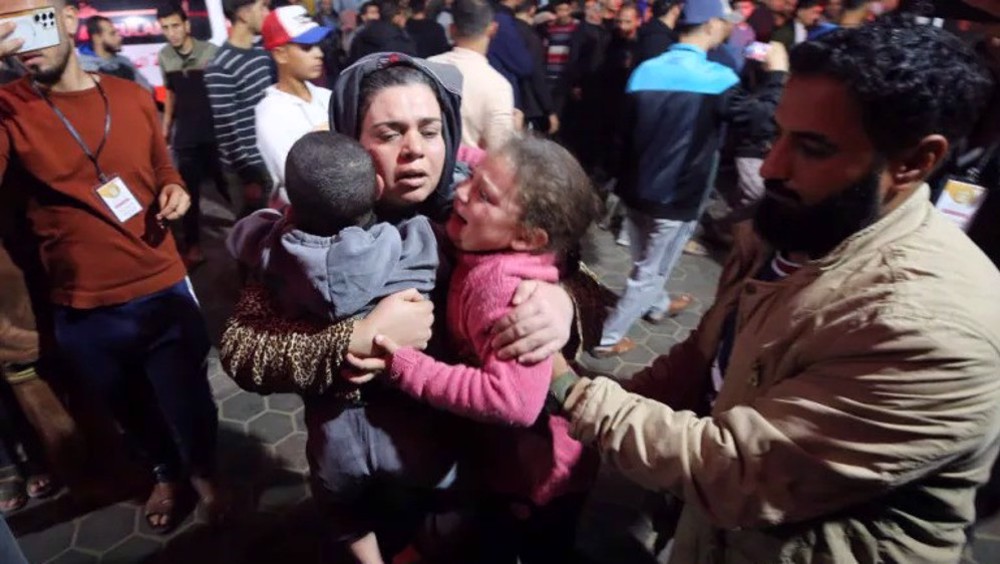
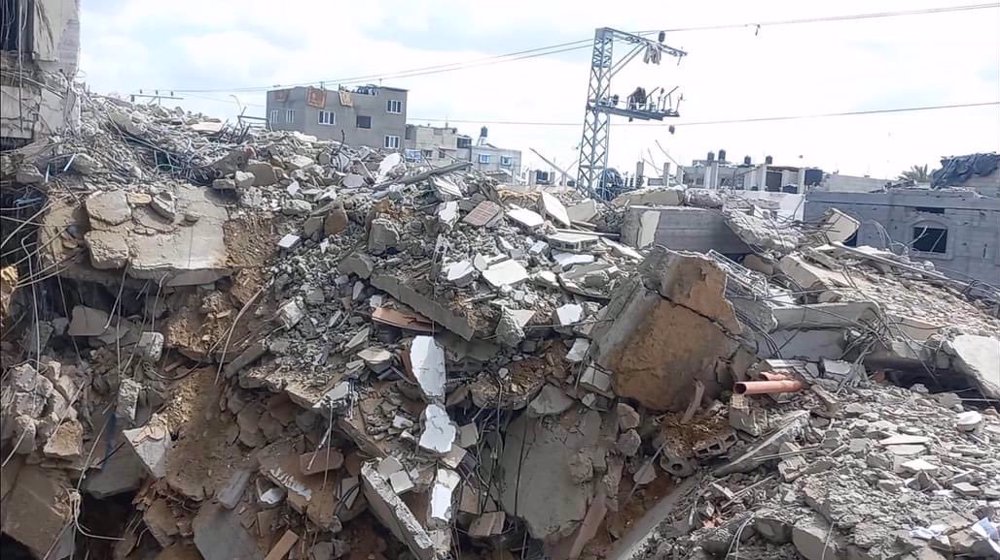

 This makes it easy to access the Press TV website
This makes it easy to access the Press TV website